Consideration on improving the Energy Density of all solid Lithium Metal Batteries with Sulphide electrolyte
QQ Academic Group: 1092348845
Detailed
The research background
At present, the development of lithium ion battery mainly focuses on improving energy density and safety performance. By combining the non-combustible solid electrolyte and the high-energy density of lithium metal negative electrode, all solid lithium metal battery can theoretically solve both problems. However, the high energy density (>400 Wh kg-1) currently reported for all solid-state batteries is based on the electrode material level, and if extended to the battery level, the calculated energy density can be significantly reduced from 20 Wh kg-1 to below. This is mainly due to the use of a very thick solid electrolyte layer (>500 m), a lower positive active material load (<10 mg cm-2) and a thicker lithium metal negative electrode (>200 m) in these solid-state batteries. Preparation of ultra-thin solid electrolyte layer (<30 m), high surface capacity positive electrode (>5 mAh cm-2) and thin lithium metal negative electrode (<50 m) is the key to develop high energy density all-solid lithium metal battery. In view of the recent large amount of research work devoted to analyzing and solving this series of problems, it is urgent to summarize these representative work so as to inspire more research to further promote the development of all solid lithium metal batteries.
The article brief introduction
In a recent paper published online in the journal ACS Energy Letters, A team led by Hongli Zhu of Northeastern University summarized their strategy for developing battery-grade, high-energy-density, all-solid lithium-metal batteries, Topic is "Processing Strategies to Improve the Cell - Level Energy Density of the Metal Sulfide Electrolyte -based All - Solid - State Li Metal Batteries and Beyond", Dr Cao exalts and Dr Zhao in month for paper joint first authors.
In this review, the sulphide electrolytes due to its high conductivity at room temperature ionic (> 1 cm - 1 mS) can effectively achieve the room temperature solid-state lithium batteries, the author thus mainly based on sulphide electrolytes are discussed, and the other typical solid electrolyte such as oxide electrolytes, polymer electrolytes and halide electrolyte summarizes respectively. Firstly, the preparation of thin sulfide electrolyte layer by wet method and dry method based on binder are discussed, and the template method is introduced. Secondly, during the preparation of high load positive layer, according to the characteristics of active substances, the high voltage positive electrode material and the high specific capacity positive electrode material were analyzed respectively, and the problems and solutions of corresponding materials were summarized respectively. Then the advantages and disadvantages of the preparation methods of thin layer lithium metals were analyzed and the methods of interface stability were summarized based on the instability of sulfide and lithium metals. Considering the battery structure of solid-state battery is different from that of liquid battery, the structural design of battery is discussed. Finally, the problems and strategies encountered in the current research of high energy density all-solid lithium metal battery are summarized, and the future development direction is prospected.
The core content presentation section

FIG. 1a) Comparison of the reported energy density of all-solid lithium metal batteries relative to active substances and the energy density at the battery level. B) The reported thickness comparison of the anode layer, electrolyte layer and cathode of lithium metal in all-solid lithium metal batteries. C) liquid battery, D) common all-solid lithium metal battery and E) future high-energy density all-solid lithium metal battery structure diagram.
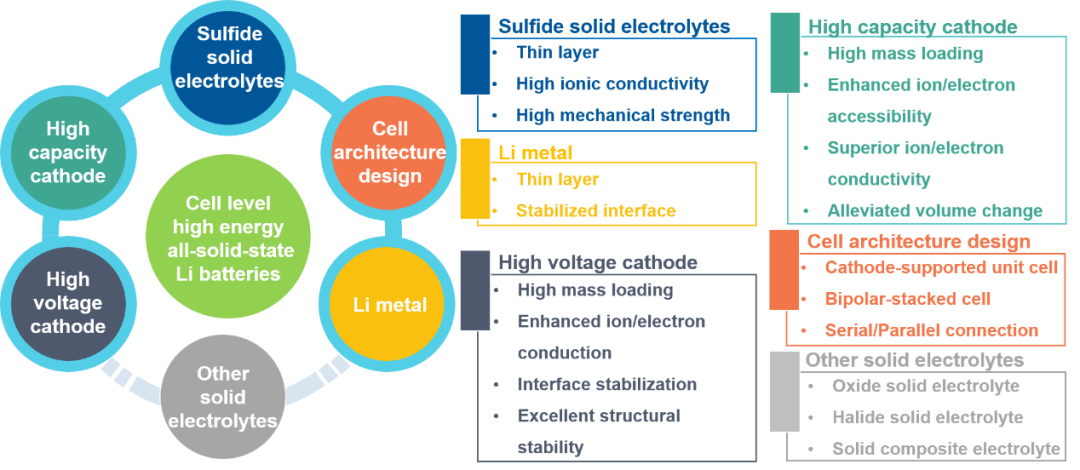
FIG. 2 A frame diagram of this review aims to achieve battery level high energy density for all solid lithium metal batteries through the design of sulphide electrolytes, high voltage positive electrodes, high specific capacity positive electrodes, lithium metals, battery structure design, and other solid electrolytes
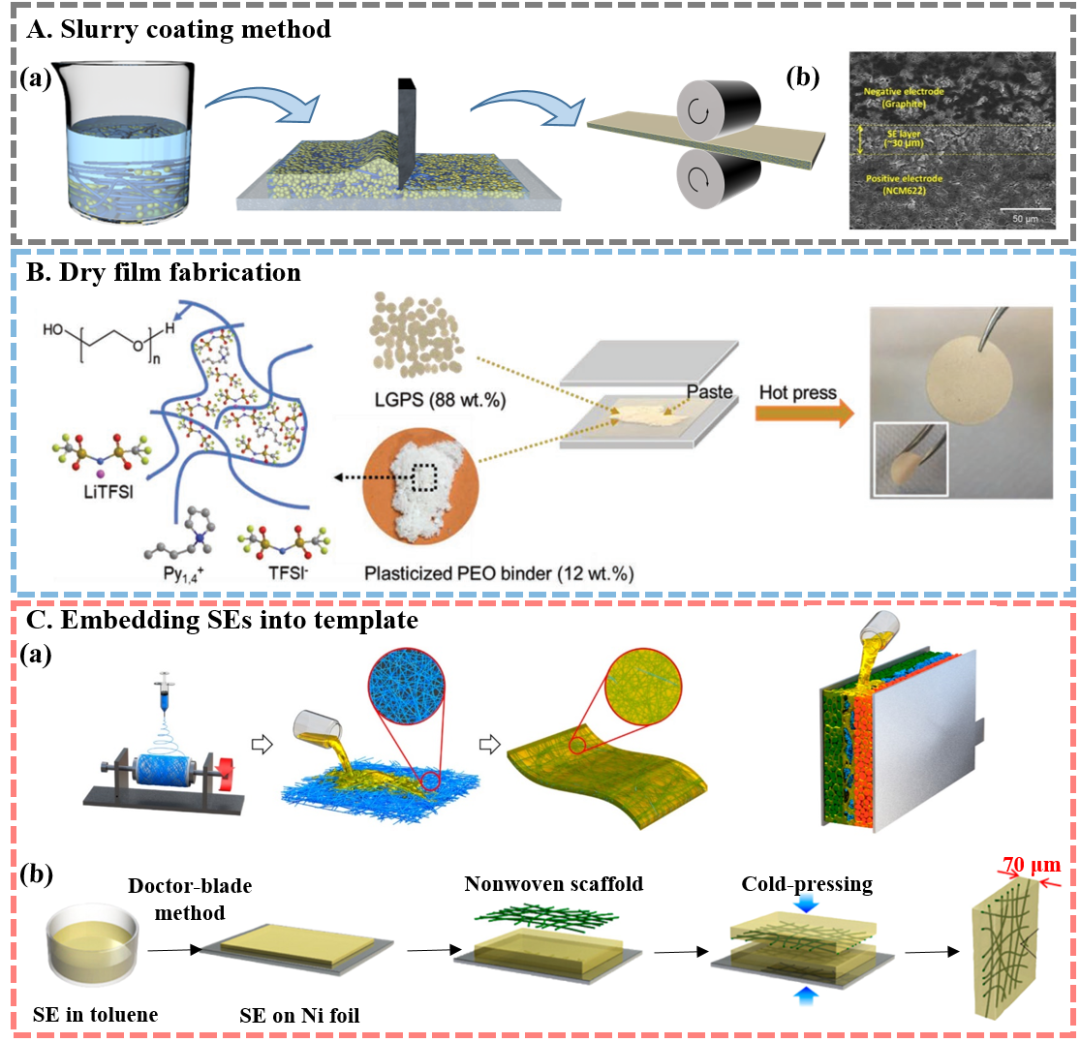
FIG. 3 Preparation of ultra-thin solid electrolyte layer by A) wet slurry coating, B) dry film formation and C) template method.
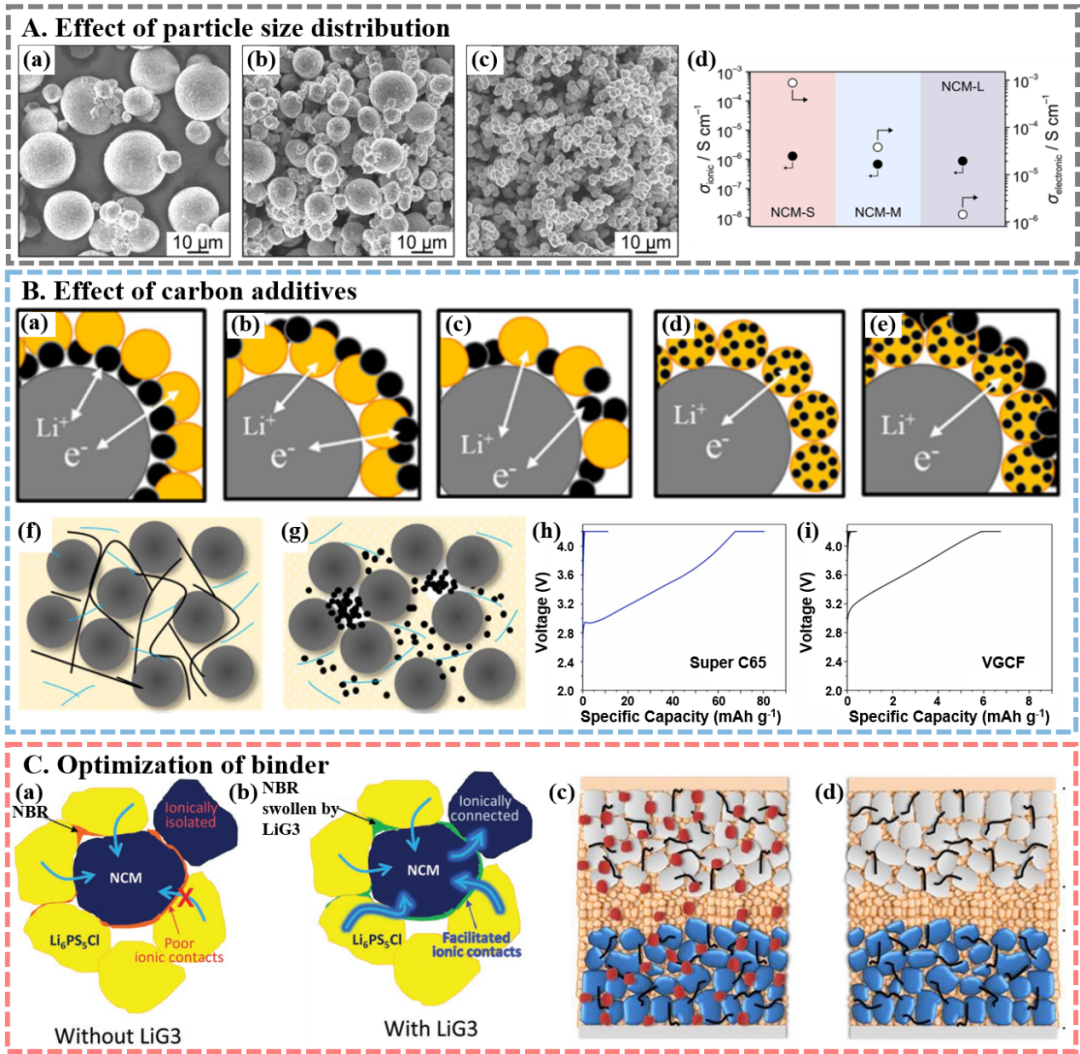
FIG. 4 Optimization of high voltage positive electrode, high surface capacity is achieved by regulating A) the particle size distribution of electrode materials and solid electrolyte, B) the conductive assistant carbon materials and C) the binder, etc.
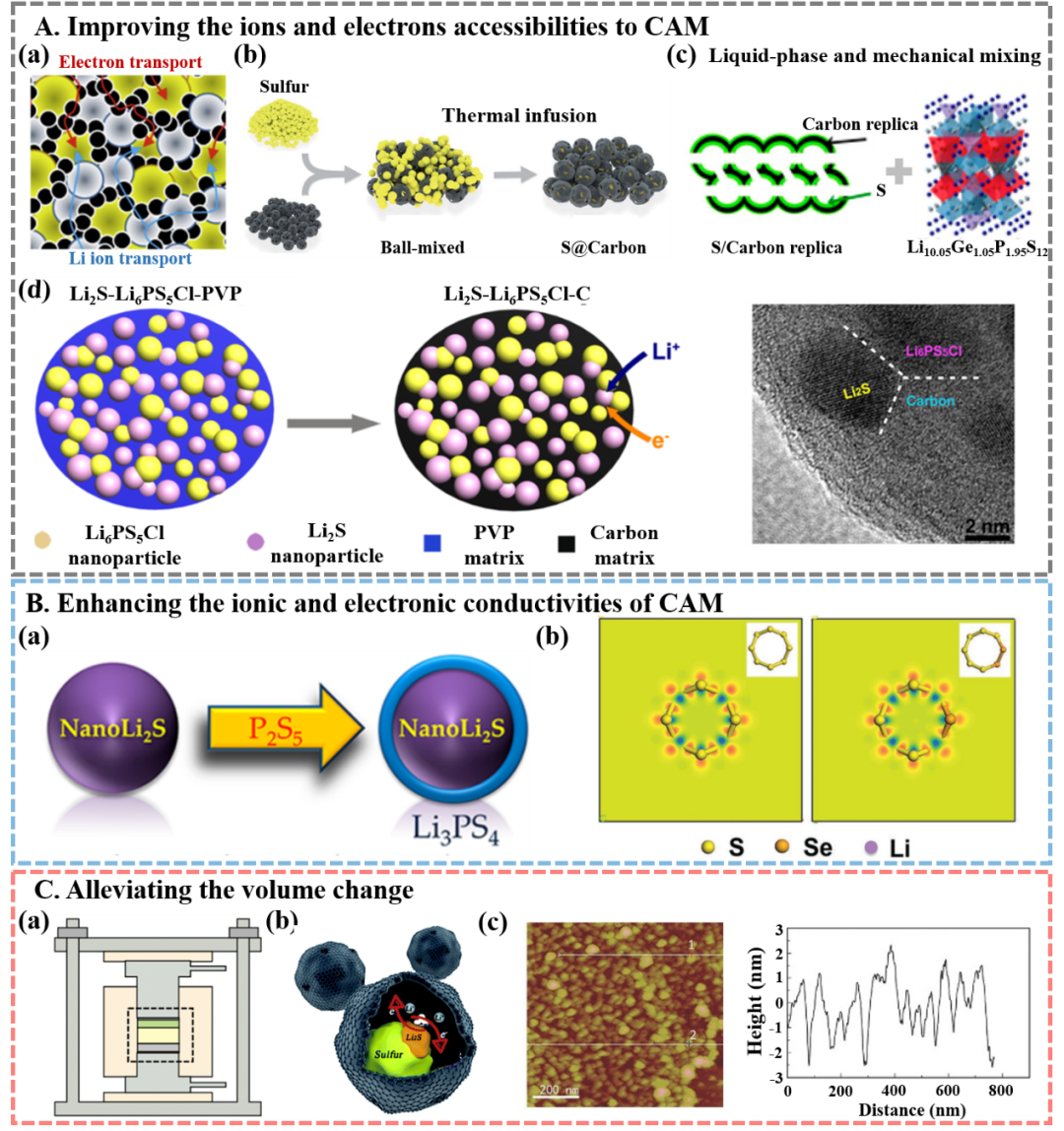
FIG. 5 Optimization of high specific capacity positive electrode, high surface capacity is achieved by A) improving the accessibility of electrons and ions to active substances, B) improving the ion and electron conductivity of active substances, and C) buffer volume expansion
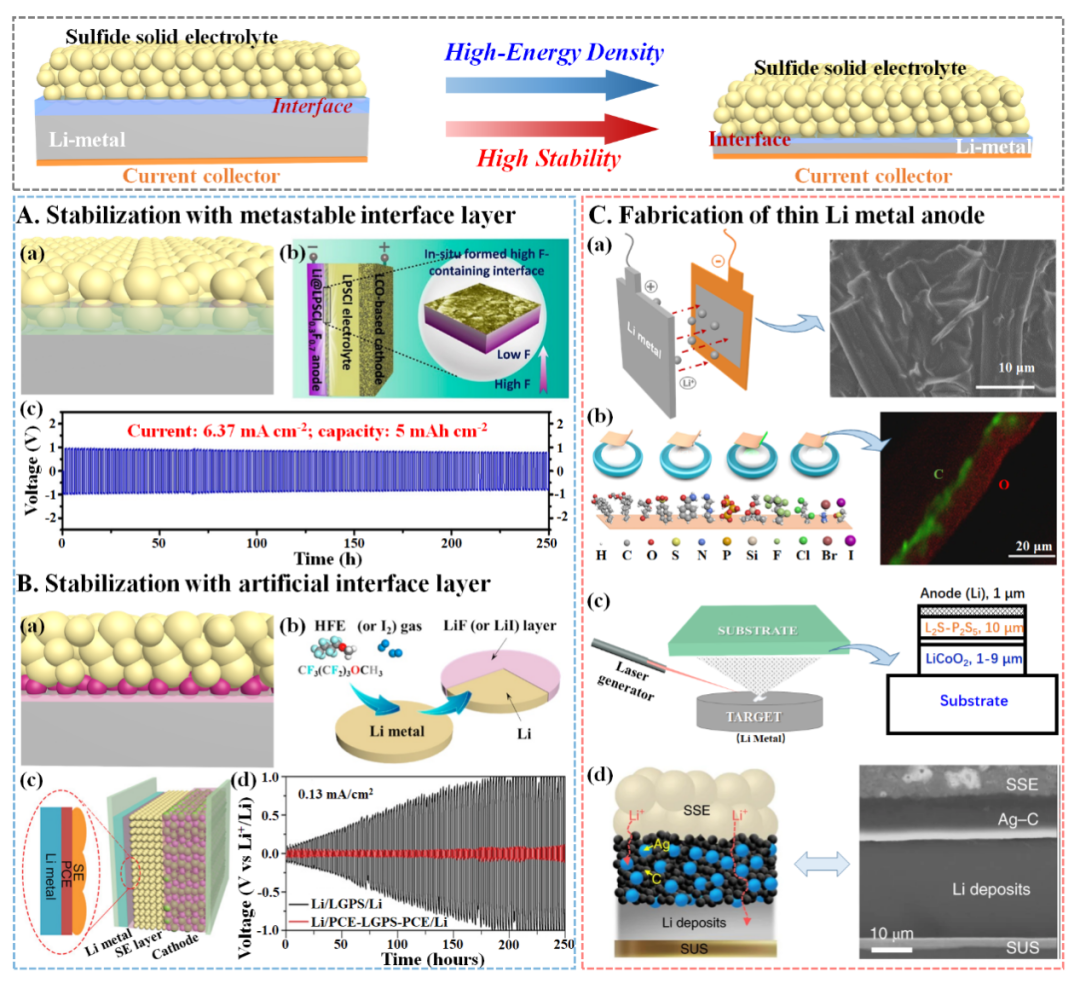
FIG. 6 Interfacial stability of lithium metal anode and sulfide electrolyte is improved by A) formation of A sub-stable layer and B) introduction of artificial interface layer, and C) preparation of ultra-thin lithium metal by multiple pathways.
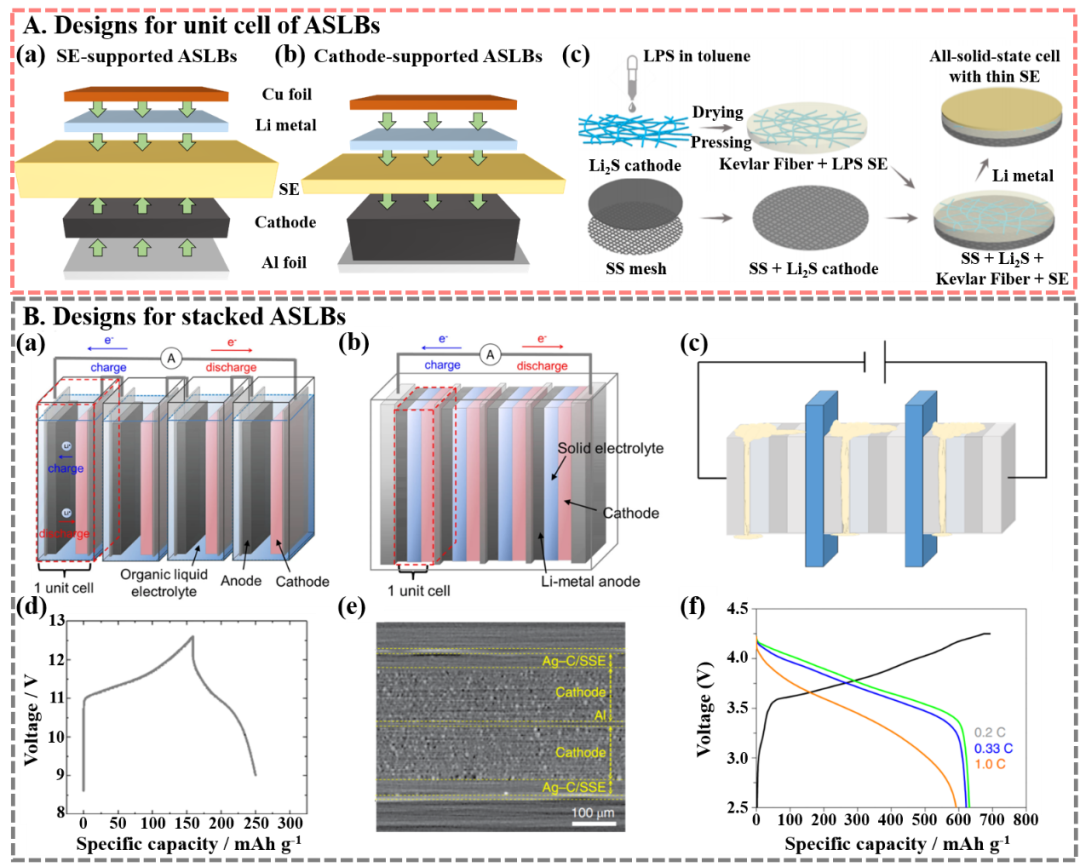
FIG. 7 Structural design of all-solid lithium metal battery A) battery unit and B) battery pack.
Document details
Cao, D.; Zhao, Y.; Sun, X.; Natan, A.; Wang, Y.; Xiang, P.; Wang, W.; Zhu, H., Processing Strategies to Improve Cell-Level Energy Density of Metal Sulfide Electrolyte-Based All-Solid-State Li Metal Batteries and Beyond. ACS Energy Letters 2020, 3468-3489. The thesis links: https://pubs.acs.org/doi/full/10.1021/acsenergylett.0c01905 team link: http://www.coe.neu.edu/research/hongli_group/
Source: Lithium Battery Frontier
This information is from the Internet for academic exchange only. If there is any infringement, please contact us to delete it immediately
- Previous: Biophysiological Insti
- Next: A Rising 2D Star: Nove


 Academic Frontier
Academic Frontier